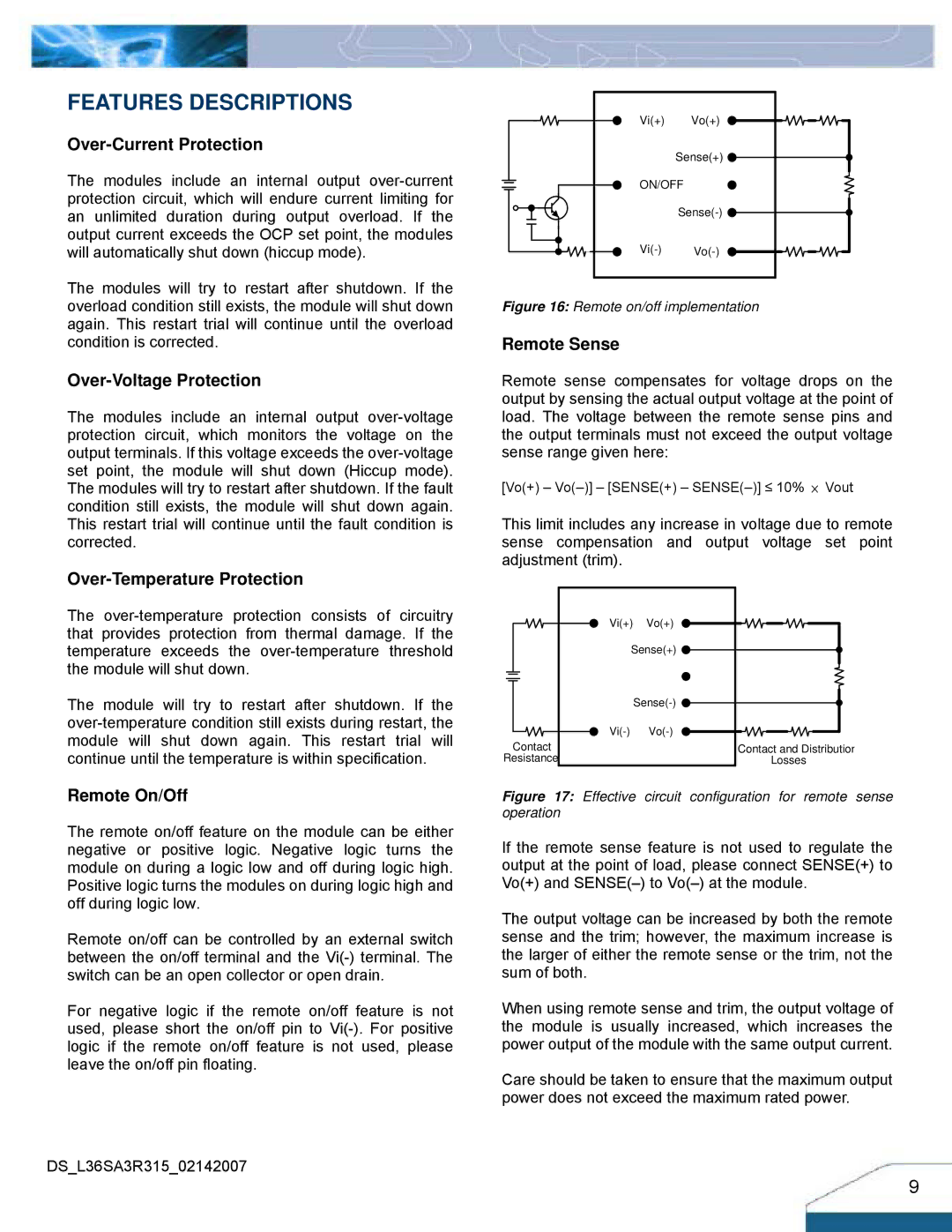
FEATURES DESCRIPTIONS
Over-Current Protection
The modules include an internal output
The modules will try to restart after shutdown. If the overload condition still exists, the module will shut down again. This restart trial will continue until the overload condition is corrected.
Over-Voltage Protection
The modules include an internal output
Vi(+) | Vo(+) |
| Sense(+) |
ON/OFF | |
| |
Figure 16: Remote on/off implementation
Remote Sense
Remote sense compensates for voltage drops on the output by sensing the actual output voltage at the point of load. The voltage between the remote sense pins and the output terminals must not exceed the output voltage sense range given here:
[Vo(+) –
This limit includes any increase in voltage due to remote sense compensation and output voltage set point adjustment (trim).
The
The module will try to restart after shutdown. If the
Contact
Resistance
Vi(+) Vo(+) Sense(+)
Contact and Distribution Losses
Remote On/Off
The remote on/off feature on the module can be either negative or positive logic. Negative logic turns the module on during a logic low and off during logic high. Positive logic turns the modules on during logic high and off during logic low.
Remote on/off can be controlled by an external switch between the on/off terminal and the
For negative logic if the remote on/off feature is not used, please short the on/off pin to
DS_L36SA3R315_02142007
Figure 17: Effective circuit configuration for remote sense operation
If the remote sense feature is not used to regulate the output at the point of load, please connect SENSE(+) to Vo(+) and
The output voltage can be increased by both the remote sense and the trim; however, the maximum increase is the larger of either the remote sense or the trim, not the sum of both.
When using remote sense and trim, the output voltage of the module is usually increased, which increases the power output of the module with the same output current.
Care should be taken to ensure that the maximum output power does not exceed the maximum rated power.
9
